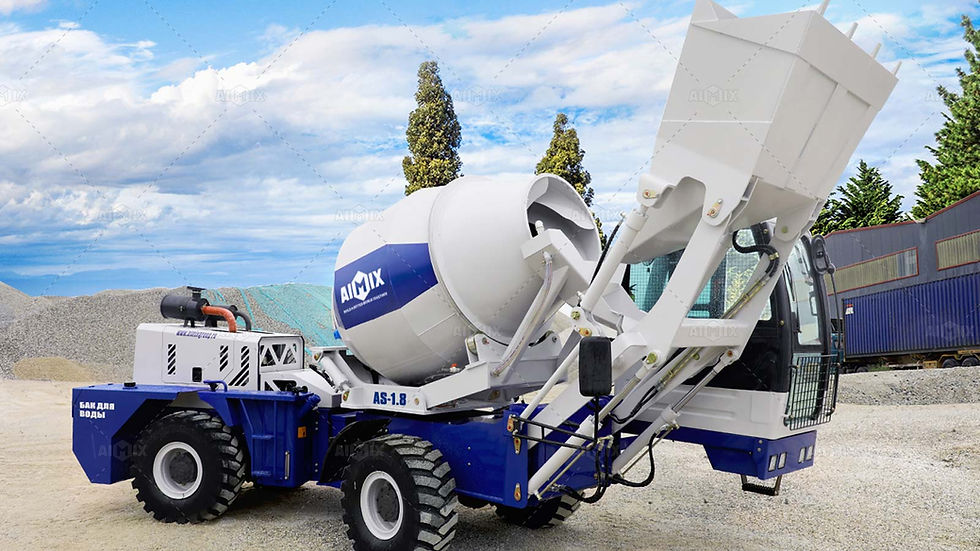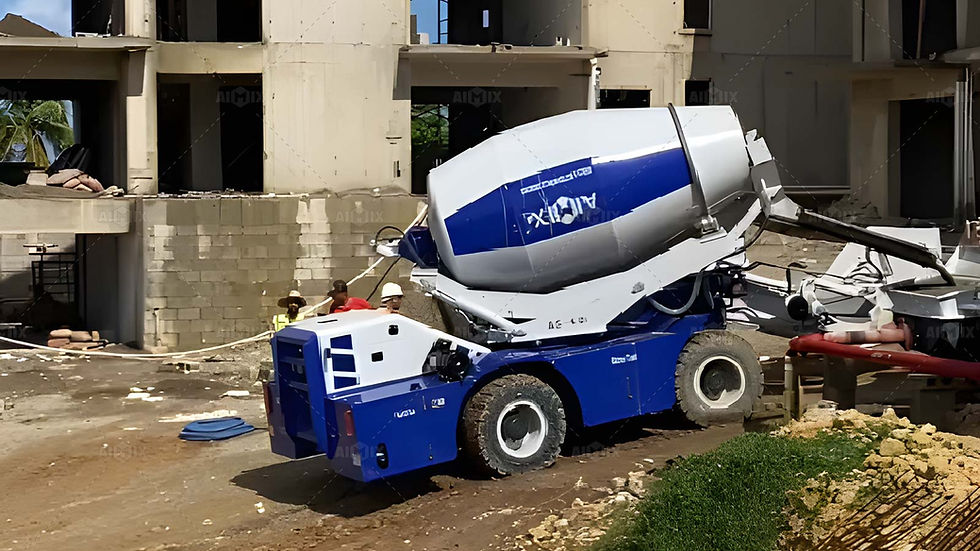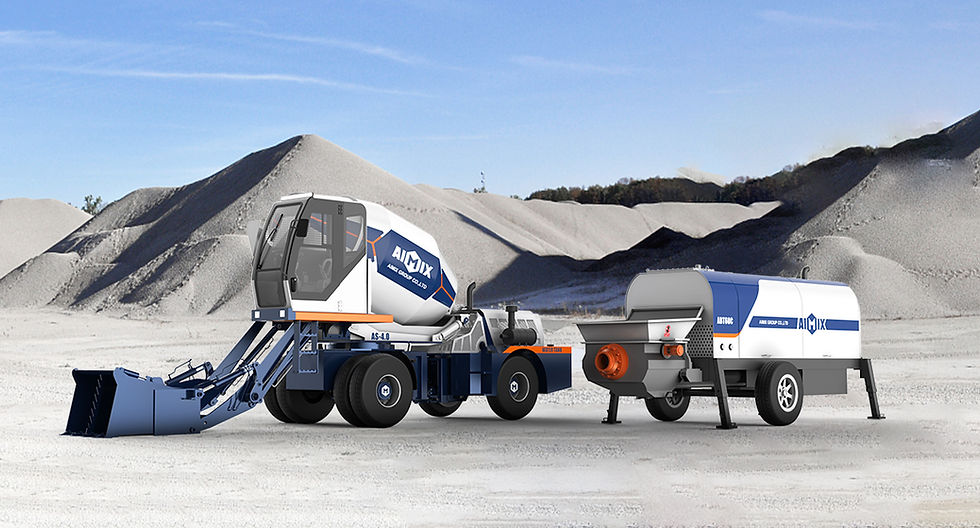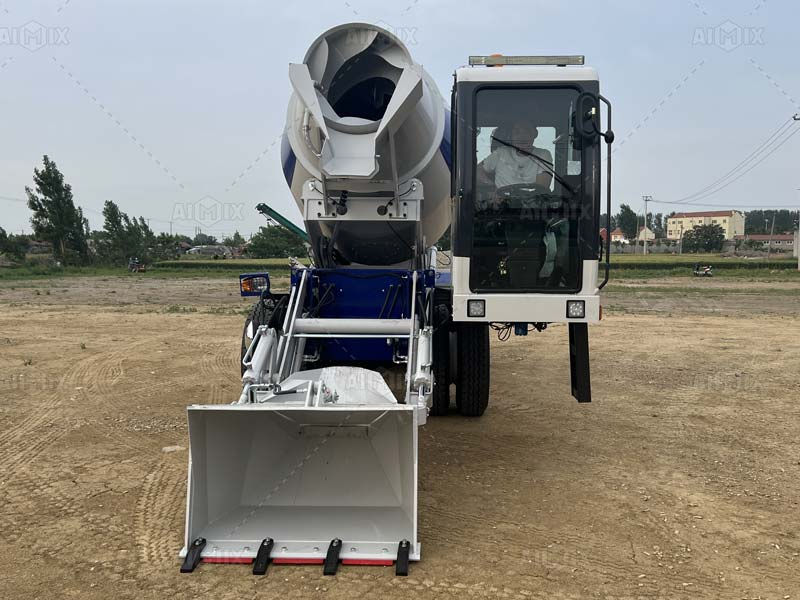What are the Common Maintenance Issues with a Self-Loading Concrete Mixer?
- aimixindonesia5
- May 5, 2024
- 2 min read
Investing in a self-loading concrete mixer is a wise choice for construction projects. However, like any machinery, it comes with its set of maintenance challenges. Understanding these issues is crucial for ensuring smooth operations and maximizing the lifespan of your equipment.

1. Hydraulic System Leakage
One of the most common issues faced with self-loading concrete mixers is hydraulic system leakage. This can occur due to worn-out seals, loose connections, or excessive pressure. Regular inspection and prompt repair are essential to prevent downtime and maintain efficiency.
2. Electrical Malfunctions
The self loader mixer relies heavily on its electrical components for various functions such as mixing, loading, and transportation. Malfunctions in the electrical system can disrupt operations and pose safety hazards. Routine checks and timely repairs are vital to ensure optimal performance.
3. Wear and Tear of Mixing Blades
The continuous mixing process subjects the blades of the mixer to significant wear and tear over time. This can affect the quality of the concrete produced and increase fuel consumption. Regular replacement of worn-out blades is necessary to maintain efficiency and consistency.

4. Engine Issues
The engine is the heart of the self-loading mixer truck, powering its movements and operations. Issues such as overheating, low oil pressure, or fuel contamination can lead to breakdowns and costly repairs. Proper maintenance, including regular oil changes and filter replacements, is essential to keep the engine running smoothly.
5. Tire Wear and Alignment
The self-loading mixer truck carries heavy loads, putting immense pressure on its tires. Uneven wear and misalignment can affect stability and safety on the road. Regular tire inspections and alignments are crucial to prevent accidents and ensure optimal performance.
6. Drum Cleaning and Maintenance
The drum of the mixer beton self loading accumulates concrete residue after each use, leading to potential blockages and deterioration. Regular cleaning and maintenance are essential to prevent buildup and ensure smooth mixing operations.

7. Fuel Efficiency
Poor fuel efficiency not only increases operating costs but also indicates underlying issues such as engine inefficiency or fuel leaks. Monitoring fuel consumption and addressing any discrepancies promptly can help optimize performance and reduce expenses.
Conclusion
While self-loading concrete mixers offer convenience and efficiency, they require regular maintenance to operate at their best. By addressing common issues promptly and implementing a proactive maintenance schedule, contractors can ensure smooth operations, minimize downtime, and maximize the lifespan of their equipment.
Investing in a self-loading concrete mixer is a significant decision, but understanding the self-load concrete mixer care and maintenance tips is crucial for its longevity and performance. By staying proactive and addressing issues promptly, contractors can ensure seamless operations and maximize the return on their investment.



